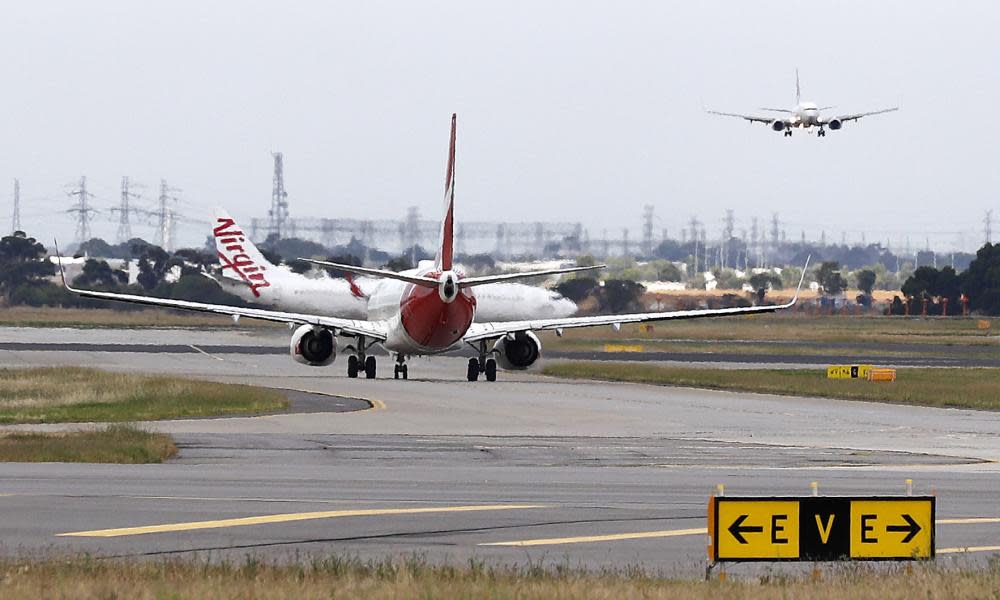Melbourne airport runway proposal causing stress among communities, critics say

Communities in Melbourne’s west are facing stress and financial uncertainty around the development of a third runway at Melbourne airport, critics say, with the decision expected to take up to another six months.
The aviation sector had been anticipating a decision by the commonwealth on the $1.9bn project would be handed down by mid-June, but industry sources have told Guardian Australia it is now expected towards the end of the year.
John Hedditch, former mayor of Brimbank in Melbourne’s outer west, said alongside the Melbourne Airport Rail project being delayed, uncertainty over the runway was also having an impact on communities.
“The people in the west are being kept in the dark due to what’s happening,” he said.
“The uncertainty is just stressing people more because they need clarity in their lives on this one. It’s a big-ticket health and life matter.”
He said some families in the west would not be able to afford to sell their home and repurchase property.
“Who would want to put their kids through schools that are impacted by the noise?”
The Brimbank mayor, Bruce Lancashire, said he understood the assessment process may take time, pointing to the “serious health and environmental impact” the council has raised during the consultation period.
An independent health report commissioned by the council last year found the runway could impact sleeping patterns – potentially leading to increased rates of cardiovascular disease – and may affect children’s cognitive development in surrounding areas.
The airport maintained it has been upfront about the benefits and impacts associated with the runway. An airport-commissioned peer-reviewed health assessment concluded that for locations within 15km from the airport, the severity of potential health effects on schools and childcare centres would be “moderate”.
Brimbank council, which includes suburbs directly south of the airport, has also flagged the importance of a possible compensation scheme to reduce the impact of aircraft noise for communities near the airport.
The airport is planning for the 3km-long runway to be operating by the end of the decade to help meet demand, with passenger numbers anticipated to double to 83 million a year by 2046. It is designed to ease pressure on a system that was frequently plagued by delays at peak times before Covid.
Melbourne airport had planned to build a third runway running east-west, but in 2019 it switched to a north-south plan due to wind interference.
Under the proposal, it will run parallel to an existing north-south runway. Residents in areas to the north and south of the airport, including Keilor, St Albans, Bulla and Tottenham, will be most affected by the additional aircraft noise.
A Melbourne airport spokesperson said it remained hopeful the federal infrastructure minister, Catherine King, would green light the project later this year.
“The planned parallel north-south runway is essential to ensure the airport has sufficient capacity to cater for Melbourne’s continued growth and forecast demand,” the spokesperson said.
“Given the critical importance of air transport to Australia, it is vital that Melbourne airport does not become a constraint on the national aviation network or the Victorian economy.”
A spokesperson for King said her department was assessing the draft major development plan for the runway against the requirements of the Airports Act. The spokesperson said the assessment would determine if the airport had given “due regard” to the 3,000 submissions it received during the consultation process.
The federal environment department is also assessing the project’s environmental impacts against the Environment Protection and Biodiversity Conservation Act to assist King in making her final decision. After this is completed, King has 50 business days to make a final decision on the proposed third runway. There is no deadline for when the environment department hands over its advice.
A federal environment department spokesperson said its advice would consider all environmental impacts and be provided in due course.

 Yahoo News
Yahoo News 
